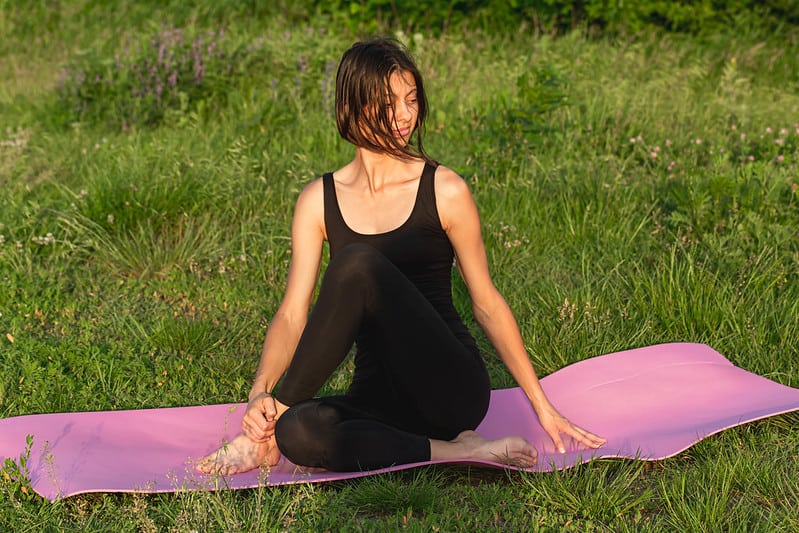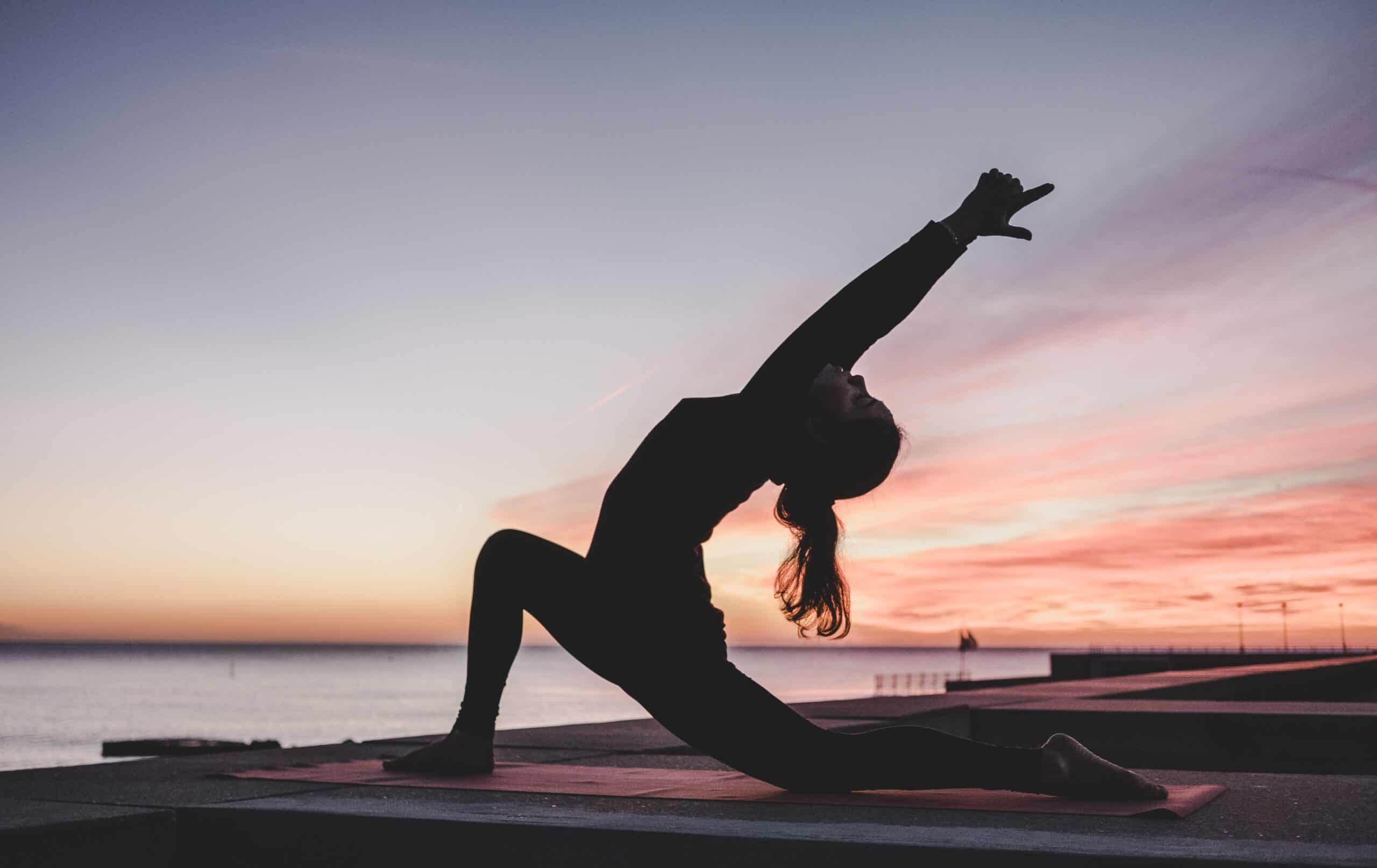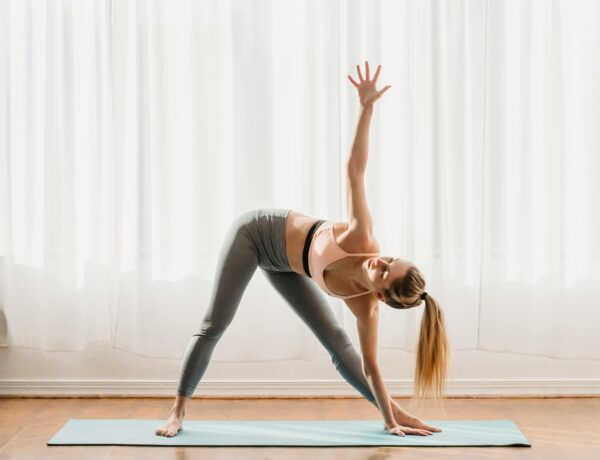The benefits of Ardha Matsyendrasana are beyond If you fully appreciate the advantages of Ardha Matsyendrasana, it’s important to first grasp the practice itself.
In Sanskrit, “Ardha” means “half,” “Matsya” means “fish,” “Indra” means “king,” and “Asana” means “pose.” According to legend, Matsyendranath, one of yoga’s respected gurus, found this posture, which gave it its name.
In the arena of yoga, where physical, mental, and spiritual well-being intersect, Ardha Matsyendrasana shows the transformational potential of asana practice.
This sitting twist, also known as Half Lord of the Fishes Pose, is highly regarded in the yogic tradition for its numerous advantages that go well beyond the physical sphere.
In this post, we’ll take a complete look into Ardha Matsyendrasana’s physiological, psychological, and emotional benefits.
Table of Contents
TogglePhysiological Benefits of Ardha Matsyendrasana :
- Ardha Matsyendrasana promotes spinal flexibility and mobility. The twisting motion stretches and strengthens the muscles, ligaments, and tendons that surround the spine, increasing its range of motion and alleviating stiffness.
- Digestive Health: During the twist, the abdominal organs are gently compressed and massaged to stimulate digestion and help in toxin removal. This can reduce digestive pain, bloating, and constipation, resulting in a healthier digestive tract.
- Hip and Groin Release: This posture works the hips and pelvis, relieving tension in the hip flexors and external rotators. Regular practice can reduce hip pain and stiffness while increasing hip flexibility and range of motion.
-
Detoxification: The twisting movement of Ardha Matsyendrasana stimulates the lymphatic system, which aids in detoxification. This can aid in the elimination of waste and poisons from the body, improving overall health and vigor.
Emotional Benefits:
- Stress Reduction: As with many yoga positions, Ardha Matsyendrasana has significant stress-relieving properties. The pose’s deep breathing and deliberate movement stimulate the parasympathetic nervous system, resulting in a sense of relaxation and peace.
- Improved Focus and Concentration: Ardha Matsyendrasana requires concentrated attention to maintain balance and stability, which improves mental clarity and concentration. This can boost cognitive function and productivity in everyday work.
- Emotional Balance: Regular Ardha Matsyendrasana practice can aid in emotional regulation and well-being. The mix of physical exercise and attentive breathing promotes inner calm and harmony.
Spiritual Benefits:
- Energetic Awakening: According to yogic philosophy, twists like Ardha Matsyendrasana promote the passage of prana, or life force energy, throughout the body. This can activate latent energy centers (chakras), promoting a sensation of vibrancy and aliveness.
- Connection to Self: The contemplative nature of Ardha Matsyendrasana promotes introspection and self-awareness. Practitioners may feel more connected to their inner selves, as well as a stronger feeling of presence and sincerity.
-
Ardha Matsyendrasana allows practitioners to feel the union of body, mind, and spirit. The combination of physical activity, breath awareness, and mental focus promotes a comprehensive approach to health and well-being.
Precautions and Contraindications:
Although Ardha Matsyendrasana has many benefits, it’s important to exercise caution, especially if you have any pre-existing medical concerns.
Individuals with spinal injuries, herniated discs, or sacroiliac joint problems should avoid deep twists or seek guidance from a skilled yoga instructor before performing Ardha Matsyendrasana.
Pregnant women should avoid severe twists and instead practice modified variations of the posture with the help of a prenatal yoga instructor.
Conclusion
Ardha Matsyendrasana exemplifies yoga’s comprehensive approach to health and well-being. Its physical, psychological, and spiritual advantages make it an excellent supplement to any yoga practice.
By adopting Ardha Matsyendrasana into your daily routine with awareness and intention, you may harness its transforming potential and experience significant beneficial changes in your body, mind, and soul.
As with any yoga practice, pay attention to your body, respect its limits, and approach the practice with patience, compassion, and reverence. May the practice of Ardha Matsyendrasana lead you on a path of self-discovery, healing, and progress.
Frequently Asked Questions ?
Ardha Matsyendrasana, also known as Half Lord of the Fishes Pose, is a yoga posture that enhances physical, mental, and emotional health. It uses a spinal twist to strengthen muscles, improve flexibility, stimulate abdominal organs, relieve constipation, and reduce tension in hips and pelvis.
Ardha Matsyendrasana, also known as Half Lord of the Fishes Pose, is a yoga pose that improves spinal flexibility, stimulates digestion, and reduces stress. It’s beneficial for individuals with digestive disorders, back pain, stress, anxiety, and metabolic syndrome. However, it shouldn’t replace medical treatment or lifestyle modifications. For specific health concerns, consult a qualified healthcare provider before starting any new exercise or yoga routine.
Ardha Matsyendrasana, also known as Half Lord of the Fishes Pose, is a pose that involves various muscles, including spinal rotation, abdominals, erector spines, quadratus Lumborum, gluteus maximus, equilateral maximus, hip flexors, shoulders and arm muscles, and neck muscles. Spinal rotation is the primary action, with deep spinal rotators and obliques playing key roles.
Abdominals stabilize the torso and spine, while erector spines extend and stabilize the spine. Quadratus Lumborum stabilizes the lumbar spine and pelvis, while gluteus maximus, equilateral maximus, and minimus stabilize the hips and pelvis. The muscles of the shoulders and arms stabilize the upper body and support the twist.
Ardha Matsyendrasana, a yoga pose, has potential risks like injury, strain, digestive discomfort, contraindication during pregnancy, high blood pressure, and joint sensitivity.
It requires flexibility in hips and knees, which may cause strain for those with tight muscles. Pregnant women should consult a yoga instructor or healthcare provider before attempting the pose. High blood pressure patients should practice mindfully with gentle movements.




No Comments